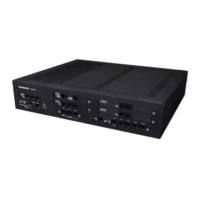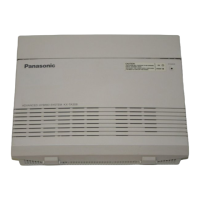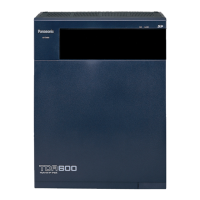Location No.
*1
Name
*2
CLI
*3
Destination
*4
Day Lunch ... Day Lunch ...
0001 123-4567 John
White
Enable Disable ... 105 100 ...
0002 123-2468 Tom
Smith
Enable Disable ... 102 100 ...
0003 123-456 A
company
Enable Disable ... 101 101 ...
: : : : : : : : :
*1
® 18.3 PBX Configuration—[10-3] CO & Incoming Call—DDI / DID Table—
DDI / DID Number
*2
® 18.3 PBX Configuration—[10-3] CO & Incoming Call—DDI / DID Table— DDI / DID Name
*3
® 18.3 PBX Configuration—[10-3] CO & Incoming Call—DDI / DID Table— CLI Ring for DDI/DID—Day, Lunch, Break, Night
*4
® 18.3 PBX Configuration—[10-3] CO & Incoming Call—DDI / DID Table— DDI / DID Destination—Day, Lunch, Break, Night
Note
The following settings can also be specified in the DID/DDI table:
• Tenant number: determines the time mode
(day/lunch/break/night) for the corresponding trunk.
• UM service group number: determines the service group to use when a call is handled by the Unified
Messaging system.
• VM trunk group number: used in Voice Mail DPT
(Digital) Integration with a VPS.
Explanation:
If the DID/DDI number is "123-4567":
1. Checks the number in the table.
® Matches the number in location 0001.
2. Checks the time mode.
In Day mode: CLI is enabled. Route to CLI destination.
In Lunch mode: CLI is disabled. Route to DID/DDI destination, extension 100.
Conditions
• To use this feature, DID/DDI service must be assigned as the distribution method for a trunk port.
• DID/DDI Number Modification
It
is
possible to modify a received DID/DDI number, which may be convenient when programming the DID/
DDI table. The modification method (removed number of digits/added number) can be programmed on a
trunk port basis.
[Modification Example]

